This article has multiple issues. Please help improve it or discuss these issues on the talk page . (Learn how and when to remove these template messages)
|

This is a survey of the postage stamps and postal history of Jamaica .
This article has multiple issues. Please help improve it or discuss these issues on the talk page . (Learn how and when to remove these template messages)
|

This is a survey of the postage stamps and postal history of Jamaica .
Jamaica was the first British colony to establish a post office. [1] Gabriel Martin was appointed postmaster on 31 October 1671, shortly after British possession of the island was confirmed. Martin carried mail via posthorse between St. Jago and Passage Fort for several years, then disappeared from the record. In the 1680s, sea captain James Wale secured the support of the Earl of Rochester to set up a post office (against the wishes of Jamaican governor Molesworth), but the service seems to have been stillborn, and not until 1705 was a statute (9 Anne) created to legally establish a postal service (in several islands of the West Indies) and allow the postmaster to charge a fee for the delivery of mail. Letters were carried by a packet service until 1711, then the postal service lapsed again until re-established by Governor Nicholas Lawes in 1720.
The local planters typically preferred to entrust their letters directly to merchant ship captains, and considered the charging of fees by postmaster Edward Dismore to be tantamount to extortion. Matters came to a head in 1755, when a select committee examined the finances of the postal system, but Dismore continued as postmaster into the 1780s, eventually establishing some two dozen post offices across the island.

British stamps were used from 8 May 1858 in Kingston and from November 1858 at other offices. [1] Until 1860, the postal service under the control of Great Britain, despite repeated efforts by Jamaican authorities to take over. Soon afterwards, British stamps were no longer accepted, and De La Rue was commissioned to produce stamps for Jamaica, featuring a laureate profile of Queen Victoria. The first issue consisted of five values ranging from one penny to one shilling, each with a different frame, inscribed "JAMAICA POSTAGE", and were watermarked with a pineapple design. They were first issued on 23 November 1860. [1] Additional stamps in the series appeared through the end of the century.
In 1863 four letter boxes were placed around Kingston. Inland delivery was increased from twice/week to three times per week in 1868. Mail carriage was originally via mule, then via railroad in the 1860s, then back to roads due to difficulties with the trains, not switching back to railroad until the railways were improved in the late 1870s. Jamaica joined the Universal Postal Union on 1 April 1877. [2]
In 1887, the Legislative Council resolved to use a common stamp design for both postage and revenue purposes, and in 1889 Jamaica issued three key plate stamps inscribed "POSTAGE & REVENUE", with the value tablet in a different color.

In 1900, Jamaica's first pictorial stamp featured a view of Llandovery Falls. Originally intended as a commemorative stamp marking the adoption of Imperial Penny Postage in 1889, it was too long delayed, and is considered a regular stamp. Originally issued in red, it was redesigned and issued in red&black the next year.
For unknown reasons, Jamaica did not adopt a profile of Edward VII upon his accession. Instead, beginning in 1903, new stamps featured the coat of arms of the colony. Following a special petition in 1910, Edward VII was recognized posthumously on a two-pence gray stamp issued 3 February 1911. Stamps depicting George V were more timely, first appearing in 1912.
A pictorial series in 1919 included twelve stamps, ranging from the Jamaica Exhibition of 1891 to various statues and scenery. The series was not commemorative, but was a result of repeated requests by local philatelists to governor Leslie Probyn.
The next definitive series was issued for George VI in 1938, with low values being a profile of the king alone, and the higher values including scenes of various local industries. An issue with new scenes and a full-face portrait of George VI marked the granting of self-government in 1944, although it was not issued until August 1945.
A set of four stamps with historic scenes marked the 300th anniversary of British control in 1955, followed in 1956 by a series of 16 stamps depicting flora, fauna, and local scenery.

Upon independence in 1962, the 1956 stamps were overprinted "INDEPENDENCE" and "1962". In 1964, a set of three depicted Miss World Carole Joan Crawford; they were soon followed by a new series of 16 with various designs. Only the one-pound value included a portrait of Queen Elizabeth; from independence on, the Queen was rarely included in designs.[ citation needed ]

The postal and philatelic history of Canada concerns postage of the territories which have formed Canada. Before Canadian confederation, the colonies of British Columbia and Vancouver Island, Prince Edward Island, Nova Scotia, New Brunswick and Newfoundland issued stamps in their own names. The postal history falls into four major periods: French control (1604–1763), British control (1763–1841), colonial government control (1841–1867), and Canada, since 1867.
This is a survey of the postage stamps and postal history of Iceland. Regular mail service in Iceland was first established by a charter of 13 May 1776, and on 1 January 1873, Iceland issued its first postage stamps. The design was the same as for the Danish numeral issue of the time, denominated with values ranging from 2 to 16 skilling, and inscribed ÍSLAND. All are scarce or rare, and used copies are especially hard to find.

Indian postal systems for efficient military and governmental communications had developed long before the arrival of Europeans. When the Portuguese, Dutch, French, Danish and British conquered the Marathas who had already defeated the Mughals, their postal systems existed alongside those of many somewhat independent states. The British East India Company gradually annexed the other powers on the sub-continent and brought into existence a British administrative system over most of modern-day India, with a need to establish and maintain both official and commercial mail systems.

Postage stamps and postal history of Great Britain surveys postal history from the United Kingdom and the postage stamps issued by that country and its various historical territories until the present day.

This is a survey of the postage stamps and postal history of the Falkland Islands.
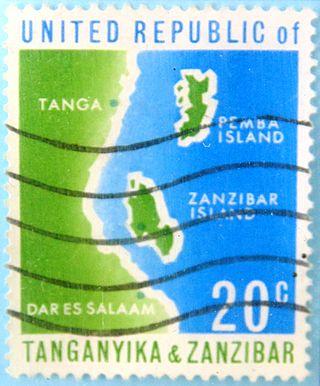
The story of the postage stamps and postal history of Tanzania begins with German East Africa, which was occupied by British forces during World War I. After the war, the territory came under British rule, was named Tanganyika and issued stamps under that name until after a union with Zanzibar in 1964.

This is an overview of the postage stamps and postal history of Australia.

This is a survey of the postage stamps and postal history of Bahawalpur.
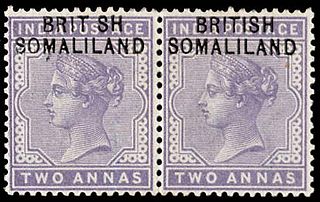
Originally mail from British Somaliland used postage stamps of Egypt, then India. In 1903, about 30 types of stamps of India were overprinted "BRITISH / SOMALILAND".
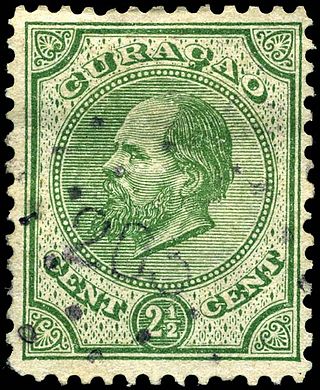
This is a survey of the postage stamps and postal history of the postal areas Netherlands Antilles as well as its predecessor Curaçao. The area consisted of the islands Bonaire, Saba and Sint Eustatius as well as Sint Maarten, Curaçao and Aruba.

The postal history of the Bahamas begins in the 18th century, with the first post office operating since 1733. The earliest known letters date from 1802. In 1804 a straight-line "BAHAMAS" handstamp came into use. The Royal Mail Line initiated a regular mail service in 1841, and from 1846 used a "Crown Paid" handstamp along with a dated postmark for New Providence.

The postal history of Malta began in the early modern period, when pre-adhesive mail was delivered to foreign destinations by privately owned ships for a fee. The earliest known letter from Malta, sent during the rule of the Order of St John, is dated 1532. The first formal postal service on the islands was established by the Order in 1708, with the post office being located at the Casa del Commun Tesoro in Valletta. The first postal markings on mail appeared later on in the 18th century.

Mauritius, a small island in the southwest Indian Ocean, is important to the world of philately for a number of reasons. Its first two postage stamps issued in 1847, called the "Post Office" stamps, are of legendary rarity and value. They were the first stamps issued in any part of the British Empire outside of Great Britain. The unique cover bearing both “Post Office” stamps has been called "la pièce de résistance de toute la philatélie" or "the greatest item in all philately". The cover was sold at auction, in Zurich, on 3 November 1993, for 5.75 million Swiss francs, the equivalent of about $4 million – the highest price ever paid for a single philatelic item up to that time. In addition, Mauritius is well known for the subsequent locally produced issues known as "primitives," also prized by collectors.
The Federation of Rhodesia and Nyasaland, also known as the Central African Federation (CAF), was a semi-independent state in southern Africa that existed from 1953 to the end of 1963.

The postage stamps and postal history of Norfolk Island depended on Australia until 1947, when the island, an Australian territory since 1914, received its own stamps and postal autonomy.
Belize started as the colony of British Honduras, formally established in the 17th century but disputed through the 18th century.
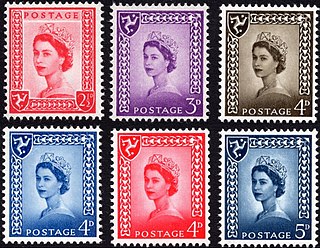
This is a survey of the postage stamps and postal history of the Isle of Man.
Qatar was a British protectorate from 1916 till it gained independence on 3 September 1971. Until 1950, the country's postal service was administered by an Indian post office in Bahrain. A British office was opened in Doha and sold stamps of British Postal Agencies in Eastern Arabia until 1957 when overprinted British stamps were introduced. Qatar Post took responsibility for postal administration in May 1963 and joined the Universal Postal Union in January 1969. The first Qatari stamps were issued in 1961 and there was an independence issue in January 1972. Since then, Qatar Post has continued to manage the country's postal administration and to issue its stamps, which are mostly relevant to Qatar itself.
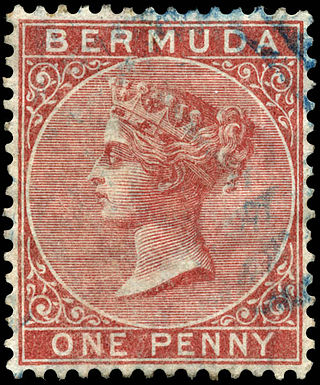
Bermuda, a group of islands in the North Atlantic Ocean, was previously uninhabited when the British established a settlement in 1612.

Revenue stamps of Malta were first issued in 1899, when the islands were a British colony. From that year to 1912, all revenue issues were postage stamps overprinted accordingly, that was either done locally or by De La Rue in London. Postage stamps also became valid for fiscal use in 1913, so no new revenues were issued until 1926–1930, when a series of key type stamps depicting King George V were issued. These exist unappropriated for use as general-duty revenues, or with additional inscriptions indicating a specific use; Applications, Contracts, Registers or Stocks & Shares. The only other revenues after this series were £1 stamps depicting George VI and Elizabeth II. Postage stamps remained valid for fiscal use until at least the 1980s.